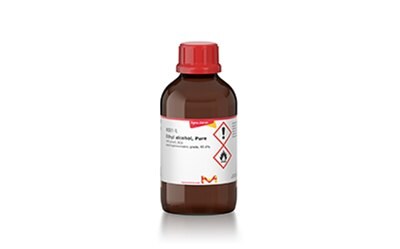Ethanol

Products
Ethanol, also known as ethyl alcohol or grain alcohol, is a colorless, volatile, flammable liquid with the chemical formula C2H5O. Ethanol is a polar substance, which is miscible with water and many organic solvents such as methanol, Isopropanol, acetone, ethyl acetate, and glycerol. Ethanol is naturally produced by the fermentation process of plant-based materials such as sugars, corn, and wheat by yeasts.
Ethanol as a solvent
Ethanol is used in pharma, research, and academia as a reagent as well as a solvent. Because of its relatively low toxicity compared with other alcohols and ability to dissolve non-polar substances, ethanol can be used as a solvent in medical drugs, perfumes, and vegetable essences such as vanilla.
In analytical chemistry, ethanol is used for extraction of alkaloids from plant materials, and as a mobile phase in chromatography.
Ethanol as a co-solvent
Ethanol and water (Ethanol solution) mixture is used as a recrystallization solvent, as a reaction medium in chemical reactions, as a reaction medium in chemical synthesis and as a standard reference material in the calibration of instruments and techniques used for the determination of ethanol.
The ethanol/acetone mixture is used in base catalyzed aldol condensation.
Hydrochloric acid in ethanol mixture is used in acid catalyzed reactions, such as for conversion of alcohols to alkyl halides, in which ethanol acts as a solvent and hydrochloric acid act as a catalyst.
Ethanol in molecular biology
Pure ethanol is used in molecular biology for extraction of DNA and RNA, array hybridization and in ethanol sedation assay.
HPLC grade ethanol
Absolute ethanol is used as solvent in reverse phase-HPLC as a mobile phase.
Spectrophotometric grade ethanol
In UV spectroscopy ethanol is used as a solvent, due to its low viscosity and transparency to UV light (200-400 nm), which means that ethanol does not absorb significant amounts of UV light, and thus allows the sample to be analysed without interference from the solvent.
To continue reading please sign in or create an account.
Don't Have An Account?